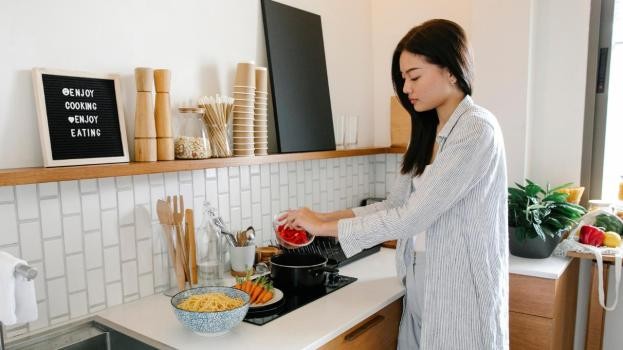How to Cook More at Home and Love It
In today’s fast-paced world, where convenience often trumps culinary creation, the idea of cooking more at home can feel less like a delightful hobby and more like an added chore to an already overflowing schedule. For many, the allure of takeout or dining out is undeniable, promising a break from decision-making, preparation, and, perhaps most dauntingly, the washing up. Yet, much like investing in a long-term business strategy yields greater returns than short-sighted gains, embracing home cooking offers a multitude of benefits that extend far beyond mere sustenance. It’s an investment in your health, your finances, and even your personal well-being. The secret, however, lies not just in *doing* it more, but in learning to *love* the process, transforming it from a task into a rewarding experience.
One of the initial hurdles people encounter is the perception that home cooking is inherently time-consuming and complex. This notion often stems from an imagined ideal of gourmet meals requiring elaborate techniques and exotic ingredients. The first step to embracing home cooking with joy is to **reframe your expectations** and simplify your approach. Think of it as developing a minimum viable product (MVP) in the culinary world. Start with simple, familiar dishes that require minimal ingredients and straightforward preparation. A classic pasta dish with a quick homemade sauce, a simple roast chicken with vegetables, or even a hearty soup can be incredibly satisfying and far less intimidating than a multi-course meal. By mastering a few foundational recipes, you build confidence and create a repertoire that serves as your culinary comfort zone.
Furthermore, **strategic planning and preparation** are paramount to making home cooking a sustainable and enjoyable habit. This mirrors the meticulous planning required for any successful business venture. Dedicate a small block of time each week, perhaps on a Sunday afternoon, to meal planning. Consider what you genuinely enjoy eating, factoring in dietary preferences and available ingredients. This isn’t about rigid adherence, but about creating a flexible framework. Simultaneously, engage in some **mise en place**—a culinary term meaning “everything in its place.” Chop vegetables, pre-portion ingredients, or even cook grains like quinoa or rice in advance. Having these components ready to go significantly reduces the time and effort required during busy weeknights, making the actual cooking process feel less like a mountain to climb and more like a straightforward assembly.
A significant part of loving the process comes from **experimentation and embracing imperfection**. Just as innovation drives progress in business, a willingness to try new recipes and techniques can revitalize your kitchen adventures. Don’t be afraid to deviate from a recipe, add a spice you love, or substitute an ingredient. Not every culinary experiment will be a Michelin-star success, and that’s perfectly fine. View culinary mishaps as learning opportunities rather than failures. Perhaps a dish was too salty, or the texture wasn’t quite right. These instances provide valuable feedback, guiding your future cooking endeavors. The joy often lies in the journey of discovery, finding new flavors and personalizing dishes to suit your taste. This playful approach transforms cooking from a strict set of instructions into a creative outlet.
Moreover, cultivating a **well-stocked pantry** can dramatically reduce stress and increase spontaneity in your cooking. Imagine a business with a consistently replenished inventory – operations run smoother, and opportunities can be seized more readily. Keep essential staples on hand: olive oil, a variety of vinegars, dried herbs and spices, canned tomatoes, pasta, rice, and a selection of canned beans or lentils. Having these building blocks readily available means you can whip up a delicious meal even when your fresh produce supply is low, minimizing those last-minute decisions to order takeout. This foresight not only saves time but also often leads to more economical and healthier meal choices.
Beyond the practicalities, cultivating a **positive atmosphere in your kitchen** can significantly enhance your enjoyment. Think of your kitchen as your creative workspace, a place where you can unwind and express yourself. Play your favorite music, light a scented candle, or even invite a family member or friend to join you in the cooking process. Cooking doesn’t have to be a solitary activity; it can be a wonderful way to connect with others. Sharing the tasks, the laughter, and eventually, the meal, adds a social dimension that elevates the entire experience from a chore to a shared pleasure.
Finally, and perhaps most importantly, **savor the fruits of your labor**. The act of sitting down to a meal you’ve prepared yourself offers a unique sense of accomplishment and satisfaction. It’s a tangible outcome of your effort, providing nourishing fuel for your body and often a sense of deep contentment. Pay attention to the flavors, the textures, and the aromas. Appreciate the time and care you invested in creating something wholesome for yourself and those you share it with. This mindful appreciation reinforces the positive feedback loop, solidifying the idea that home cooking is not just about sustenance, but about well-being, creativity, and self-care.
In conclusion, transforming home cooking from a burden into a beloved habit requires a shift in mindset and the adoption of a few strategic practices. By simplifying initial goals, planning effectively, embracing experimentation, maintaining a well-stocked pantry, cultivating a positive kitchen environment, and truly savoring your creations, you can unlock a world of culinary enjoyment. It’s an investment that pays dividends in health, happiness, and a deeper connection to the food that nourishes you, ultimately enriching your daily life far beyond the confines of your kitchen.







